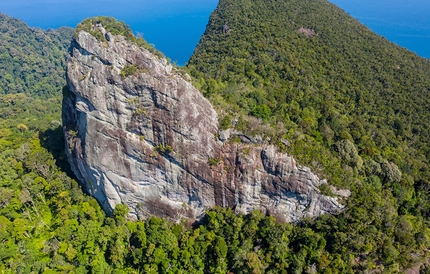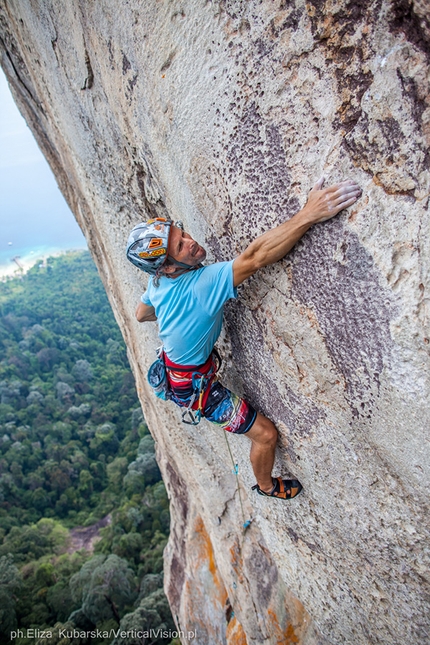New climb up Dragon Horns on Tioman Island in Malaysia
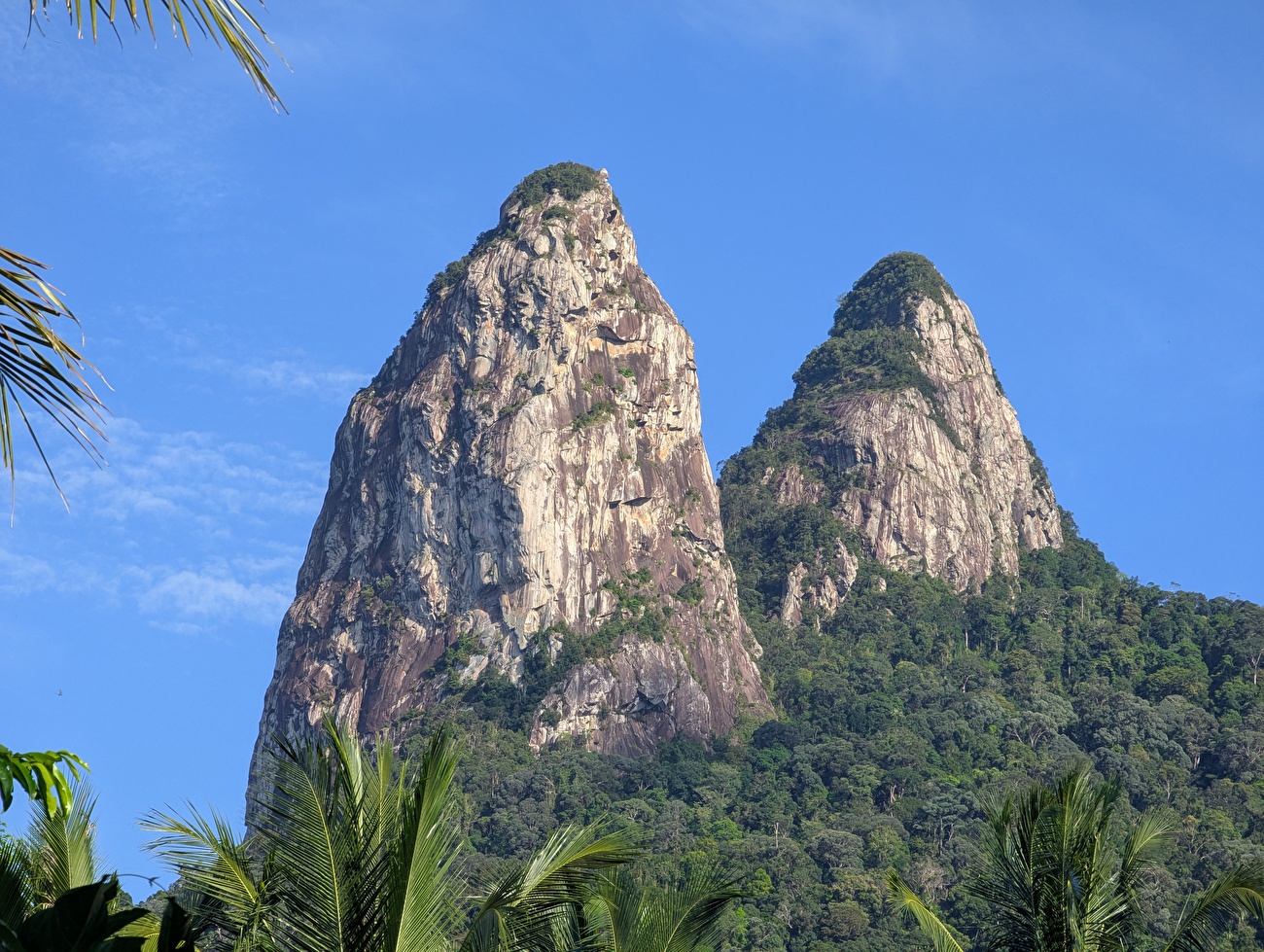
 1 / 11
1 / 11 archivio Johannes Malchow
archivio Johannes Malchow
It all started when my parents wanted to reunite the family for Christmas. With my sister in New Zealand and me in Germany, that wasn't as easy as it might sound, so we settled for the middle: Southeast Asia. Since I like to fly as little as possible, I wanted to make the long journey worthwhile. That’s why we decided to stay as long as we possibly could - four months. Seb had just finished his bachelor’s degree and was ready for a big adventure. Exploring new countries, cultures, and enjoying time with friends is great, but combining all of that with big granite walls is even better. The options for this mix are very limited in Southeast Asia, but then we found a wicked account of the first ascent of the Dragon Horns. WOW - a jungle, an ocean, an island, a small village, and a lot of unknowns. It sounded like a dream.
Seb and I were pretty new to trad climbing, had never placed a bolt, and, in general, didn't know much about big-wall climbing. We also didn’t have much gear. We got ourselves some haul bags, contacted Black Diamond - who luckily gave us a small sponsorship of cams - and off we went.
After getting to know parts of Indonesia, Malaysia, and Thailand, we met up again in Singapore and noticed that our bags were ridiculously heavy. With the packs on, we felt like horses - we had to help each other get up from the ground to avoid toppling over. Several buses later, we arrived late at night at the ferry terminal and slept in the stands of an old stadium. The next morning, the ferry ride passed quickly, and for the first time, we saw the magic of the Dragon Horns with our own eyes. We were bursting with excitement, but now we had to find a place to stay. The idea of staying for a month in a tent in the jungle, trying to keep our stuff dry, no longer seemed realistic.
We went around the village, first to Uncle Sam's, the go-to spot for all climbers - he was the pioneer who established the trails around the Dragon Horns. There we met Din, his assistant and the manager of Simukut Place. We joked about helping out on the property, and to our surprise, we were offered our own place to stay in exchange for some labor. Now we had everything we needed: a place to stay, a kitchen, and a place to dry our stuff. In hindsight, this was the key to making our adventure as successful as it was.
Having established camp, we cleared the overgrown approach trail and started to get to know the Horns by climbing existing routes. Naga and The Polish Princess really made us fall in love with the tropical granite, with its crazy features like big, incut, round pockets and Sanduhren (hourglass formations), typically found in limestone. Full of excitement for our main goal - to establish a new route - we tried out our drill and big-wall setup for the first time by climbing a variation of Naga, which gave us some confidence. Then we started cutting our way through the jungle to another part of the wall. This was a heavily overgrown task that took us multiple days before we were shut down by a massive, five-day-long tropical rainstorm.
We had core-shot one of our half ropes, so we used the rainy days to make a trip to the nearest climbing shop… in Singapore. After two days of hiking and sleeping in the harbor, we eventually found a boat willing to take us to the mainland. Freshly re-equipped, we could finally start trying to find a new route. We "jungleneered" up a wet, off-width crack - the only way we could see to start up the base of the wall - only to find ourselves at a dead end. This meant three more days of sweating, cutting down thorny ferns, constantly fearing venomous snakes, and almost going crazy from the endless screaming of the cicadas. Finally, we got to a part of the wall where we had a few potential new route starts and began trying them out.
With our return date creeping ever closer, we committed to the first promising starting pitch and hauled our bags up. In two days, we made it to pitch 3, where we established a camp and left our gear under an overhang. We returned after three days of rain, which we used to boil water, prepare several days' worth of pre-cooked meals, and fill empty soda bottles with the 25 liters of water we would need to haul up. This time we were joined by Paula, who came to visit and resupply us with mainland goods like fresh mangoes, which aren’t available in the small and beautiful village of Mukut. She also delighted us with that ongoing positive spirit and it didn’t matter how hard it got, she said yes with a big smile, in other words, she was a beautiful addition to our team.
On our first day back on the wall, we managed to reach and bolt our old high point and rappel down to Camp 1. On the second day, we hauled everything to the high point and climbed two more pitches in a partially hidden crack system. After one night in Camp 2, we climbed through bushes into a perfect, leg-wide chimney and set up for one final push to the top of the wall. We decided to leave the heavy haul bags behind, carrying only some food, a little water, a few bolts, and, most importantly, our ginormous Hilti drill in our backpacks. This would hopefully allow us to reach the top in a single-day push.
After some struggles in the hardest section - what turned out to be our crux pitch of four runout leads - we finally reached the thick, bushy peak of the South Horn. The last night was amazing, with a clear sky and the endless ocean with its rhythmic waves. In those final minutes of light, the atmosphere sharpened as contrasts melted into each other - I loved it. After one more hungry but sweet night on the wall, we started the descent: an hour-long hike up and down through the perpetually humid and loud jungle.
For the last time, we passed all the familiar landmarks: the huge boulder with artificial holds bolted on it, the ladder out back leading to the top. Each section was familiar to us by now, each with a different character. We knew them all well, and we loved running down as fast as we could - jumping over small boulders, taking funky shortcuts, and swinging around trees. Coming down the last stairs, seeing the first houses of Simukut Place and the palm trees running into the ocean - it was a great feeling. We high-fived, then jumped into the ocean with all our clothes on.
We sat on the stairs leading up to the Dragons Horns and took the mandatory pictures with Uncle Sam and Din, it felt like a dream. Then we did our final round through the village, eating everything we could, saying goodbye to everyone. We weren’t sure if we'd stayed a month or half a year, this place had become very farmilar to us. The boats slowly flew across the water, Mukut, the palm trees, the Dragon Horns moved closer together till they all merged into one dot on the horizon.
- Johannes Malchow, Freiburg, Germany



 Copia link
Copia link

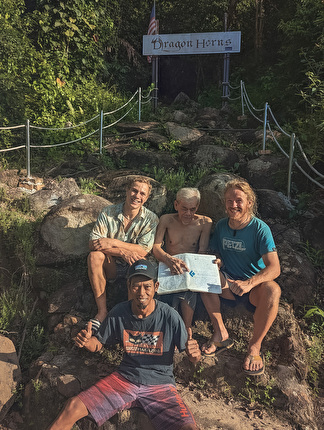
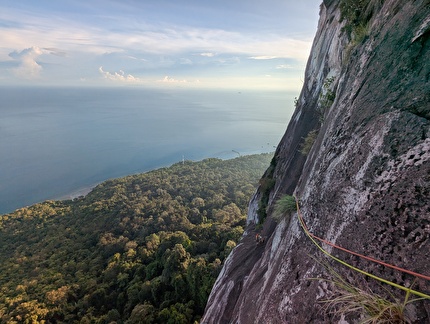
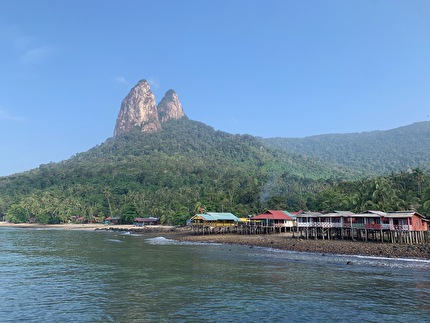
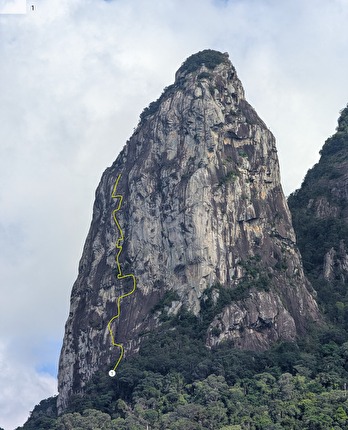


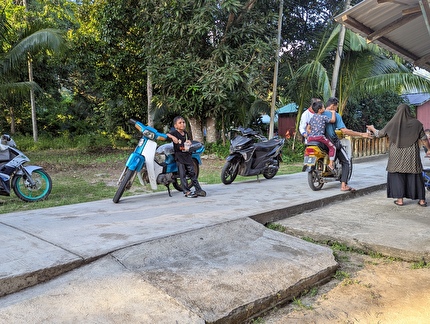
 See all photos
See all photos